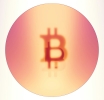What is DeFi (Ethereum) in cryptocurrency? (Decentralization Finance)

DeFi stands for Decentralized Finance, meaning that crypto owners can recreate traditional financial instruments in a decentralized architecture. That is, outside the control of companies and governments.
In other words, DeFi can be defined as a set of new financial instruments based on decentralized systems and networks: it can be thought of as an excellent platform that currently uses mainly Ethereum blockchain and smart contracts.
The argument for decentralized finance (DeFi) has been made even more pressing by allegations of misuse of funds against a centrally controlled cryptocurrency.
Bitcoin and Ethereum are the original DeFi apps. Both are controlled by large networks of computers and not by central authorities.
In short:
DeFi is a generic term for a group of financial instruments built on Ethereum.
The idea is to allow anyone with Internet access to be able to lend, borrow and bank without intermediaries.
DeFi is recognized as one of the fastest growing areas of blockchain and decentralized web space.
In other words, DeFi can be defined as a set of new financial instruments based on decentralized systems and networks: it can be thought of as an excellent platform that currently uses mainly Ethereum blockchain and smart contracts.
The argument for decentralized finance (DeFi) has been made even more pressing by allegations of misuse of funds against a centrally controlled cryptocurrency.
Bitcoin and Ethereum are the original DeFi apps. Both are controlled by large networks of computers and not by central authorities.
In short:
DeFi is a generic term for a group of financial instruments built on Ethereum.
The idea is to allow anyone with Internet access to be able to lend, borrow and bank without intermediaries.
DeFi is recognized as one of the fastest growing areas of blockchain and decentralized web space.
What is DeFi?
In essence, DeFi is a common financial instrument built on the blockchain, Ethereum in particular. They are based on open source protocols or modular frameworks for creating and releasing digital assets and are designed to provide tangible benefits of working with a public blockchain.
DeFi has a number of advantages such as censorship resistance and improved access to financial services.
Decentralizing everything is not a smart move, and many DeFi apps take this into account by offering hybrid digital assets / traditional financial services like BlockFi.
How are DeFi Apps Created?
Anyone who can write a smart contract can create DeFi apps.
InstaDApp was able to create a widely used DeFi product by simply building a better user experience on top of existing DeFi products. By making access to DeFi more convenient and easier, they were able to spark a leap in other DeFi products and were able to raise $ 2.4 million. USA.
Who Invented DeFi?
There is no single inventor of DeFi, since they are all built on top of Ethereum by different developers, and Ethereum was invented by Vitalik Buterin.
Currently, the largest and first DeFi app is MakerDAO, which was founded by Rune Christensen.
Renowned venture capital firm Andreeson Horowitz has made multimillion-dollar investments in both Compound and MakerDAO, the flagship of the current DeFi ecosystem.
DeFi and Ethereum
So what are Ethereum financial instruments? Let's take a look at some of the most popular ones. These include:
open lending protocols,
platforms for issuing tokens and investing,
prediction markets,
exchanges and exchangers, as well as
stable coins.
In essence, DeFi is a common financial instrument built on the blockchain, Ethereum in particular. They are based on open source protocols or modular frameworks for creating and releasing digital assets and are designed to provide tangible benefits of working with a public blockchain.
DeFi has a number of advantages such as censorship resistance and improved access to financial services.
Decentralizing everything is not a smart move, and many DeFi apps take this into account by offering hybrid digital assets / traditional financial services like BlockFi.
How are DeFi Apps Created?
Anyone who can write a smart contract can create DeFi apps.
InstaDApp was able to create a widely used DeFi product by simply building a better user experience on top of existing DeFi products. By making access to DeFi more convenient and easier, they were able to spark a leap in other DeFi products and were able to raise $ 2.4 million. USA.
Who Invented DeFi?
There is no single inventor of DeFi, since they are all built on top of Ethereum by different developers, and Ethereum was invented by Vitalik Buterin.
Currently, the largest and first DeFi app is MakerDAO, which was founded by Rune Christensen.
Renowned venture capital firm Andreeson Horowitz has made multimillion-dollar investments in both Compound and MakerDAO, the flagship of the current DeFi ecosystem.
DeFi and Ethereum
So what are Ethereum financial instruments? Let's take a look at some of the most popular ones. These include:
open lending protocols,
platforms for issuing tokens and investing,
prediction markets,
exchanges and exchangers, as well as
stable coins.

What is DeFi (Ethereum) in cryptocurrency? (Decentralization Finance)
Open lending protocols
Open lending protocols have probably received more attention than any other category of open finance in Ethereum. Largely due to the explosive growth in the use of stablecoins like Dai and other P2P protocols, decentralized lending is generating significant buzz.
Open, decentralized lending offers many advantages over traditional lending structures, including:
integration with lending / borrowing of digital assets
securing digital assets
instant settlements on transactions and new methods of secured lending
no credit checks, which means better access for people who cannot use traditional services
standardization and interoperability - can also reduce costs through automation
MakerDAO is the most well-known decentralized lending protocol that soared in popularity in 2019 that multiple increases in stability fees were proposed to maintain parity with the stablecoin (Dai) price peg to USD.
Open lending protocols have probably received more attention than any other category of open finance in Ethereum. Largely due to the explosive growth in the use of stablecoins like Dai and other P2P protocols, decentralized lending is generating significant buzz.
Open, decentralized lending offers many advantages over traditional lending structures, including:
integration with lending / borrowing of digital assets
securing digital assets
instant settlements on transactions and new methods of secured lending
no credit checks, which means better access for people who cannot use traditional services
standardization and interoperability - can also reduce costs through automation
MakerDAO is the most well-known decentralized lending protocol that soared in popularity in 2019 that multiple increases in stability fees were proposed to maintain parity with the stablecoin (Dai) price peg to USD.
What does Ethereum have to do with it?
Secured lending using open protocols like MakerDAO and Dharma is designed to rely on the minimization of trust that Ethereum provides to mitigate counterparty risk without requiring an intermediary.
This is achieved using the basic cryptographic verification methods common in open blockchains.
Open protocol lending is entirely limited to public blockchains like Ethereum and has some intriguing long-term implications for expanding financial inclusion around the world.
Token Issuance and Investment Platforms
Emission platforms cover a wide range of platforms, including several exchanges that are used as issuing vehicles (i.e. TZERO).
Well-known token issuance platformssecurity such as Polymath and Harbor, provide the foundation, tools and resources for issuers to launch tokenized securities on the blockchain.
They prepare their own standardized securities token contracts (such as ST-20 and R-Token) that provide automatic compliance and customizable trading options for regulatory compliance.
In addition, they are integrated with service providers such as brokers, legal entities and many others to assist issuers in their process.
Asset management platforms such as Melonport have also gained popularity, offering a digital asset management interface built on IPFS and a back end that runs on Ethereum smart contracts.
Secured lending using open protocols like MakerDAO and Dharma is designed to rely on the minimization of trust that Ethereum provides to mitigate counterparty risk without requiring an intermediary.
This is achieved using the basic cryptographic verification methods common in open blockchains.
Open protocol lending is entirely limited to public blockchains like Ethereum and has some intriguing long-term implications for expanding financial inclusion around the world.
Token Issuance and Investment Platforms
Emission platforms cover a wide range of platforms, including several exchanges that are used as issuing vehicles (i.e. TZERO).
Well-known token issuance platformssecurity such as Polymath and Harbor, provide the foundation, tools and resources for issuers to launch tokenized securities on the blockchain.
They prepare their own standardized securities token contracts (such as ST-20 and R-Token) that provide automatic compliance and customizable trading options for regulatory compliance.
In addition, they are integrated with service providers such as brokers, legal entities and many others to assist issuers in their process.
Asset management platforms such as Melonport have also gained popularity, offering a digital asset management interface built on IPFS and a back end that runs on Ethereum smart contracts.
Release platforms and investment management mechanisms are likely to expand rapidly as more participants move towards open financing.
Decentralized forecasting markets
Decentralized forecasting markets are one of the most attractive components of open finance, which are very complex but have tremendous potential.
Last year, the Augur project was very popular as a censorship-resistant Ethereum-based forecasting platform.
Forecasting markets have long been popular financial instruments for hedging risks and speculating on world events.
Decentralized prediction markets allow for the same, but rather with cryptocurrencies and the lack of the ability to censor markets.
Augur cites its use for everything from politics and weather forecasting to hedging all kinds of risk in financial or adverse real-world events.
Exchanges and exchangers
Open Funding Exchanges are mainly concerned with Decentralized Exchange (DEX) protocols and P2P markets (exchanges).
First, DEX is also a P2P exchange of assets on Ethereum between two parties, where no third party acts as an intermediary in the transaction like centralized exchanges. DEX suffers from a lack of volume due to their obscure nature and unfriendly interfaces, and as such are still in the early stages of adoption.
DEXs also use some innovative token exchange methods such as atomic swaps and other non-custodial funds to exchange one asset for another with minimal settlement time or risk.
The most popular application on Ethereum is IDEX, a decentralized exchange. In second place is EtherDelta.
Many DEXs make dubious claims that they are truly decentralized or unrelated to the letters of the law, so it is always wise to do your own research before using them.
P2P marketplaces on Ethereum have significant long-term potential.
Stablecoins
Recently, stablecoins have flooded the cryptocurrency markets with new models for issuing tokens, checking their reserves, and managing price pegs.
Stablecoins are simply tokens issued by blockchains designed to maintain a stable peg to an external asset - mainly the US dollar and sometimes gold or other asset.
However, due to market competition, the analysis shows that interest rates could be the next competitive trend in the stablecoin market, effectively reducing margins for stablecoin providers and benefiting consumers.
Decentralized forecasting markets
Decentralized forecasting markets are one of the most attractive components of open finance, which are very complex but have tremendous potential.
Last year, the Augur project was very popular as a censorship-resistant Ethereum-based forecasting platform.
Forecasting markets have long been popular financial instruments for hedging risks and speculating on world events.
Decentralized prediction markets allow for the same, but rather with cryptocurrencies and the lack of the ability to censor markets.
Augur cites its use for everything from politics and weather forecasting to hedging all kinds of risk in financial or adverse real-world events.
Exchanges and exchangers
Open Funding Exchanges are mainly concerned with Decentralized Exchange (DEX) protocols and P2P markets (exchanges).
First, DEX is also a P2P exchange of assets on Ethereum between two parties, where no third party acts as an intermediary in the transaction like centralized exchanges. DEX suffers from a lack of volume due to their obscure nature and unfriendly interfaces, and as such are still in the early stages of adoption.
DEXs also use some innovative token exchange methods such as atomic swaps and other non-custodial funds to exchange one asset for another with minimal settlement time or risk.
The most popular application on Ethereum is IDEX, a decentralized exchange. In second place is EtherDelta.
Many DEXs make dubious claims that they are truly decentralized or unrelated to the letters of the law, so it is always wise to do your own research before using them.
P2P marketplaces on Ethereum have significant long-term potential.
Stablecoins
Recently, stablecoins have flooded the cryptocurrency markets with new models for issuing tokens, checking their reserves, and managing price pegs.
Stablecoins are simply tokens issued by blockchains designed to maintain a stable peg to an external asset - mainly the US dollar and sometimes gold or other asset.
However, due to market competition, the analysis shows that interest rates could be the next competitive trend in the stablecoin market, effectively reducing margins for stablecoin providers and benefiting consumers.
Conclusions
There are many more types of members, services and products in DeFi and the open finance ecosystem, including depositories, infrastructure platforms, insurance, and payment methods.
It is always wise to do your own research and understand that DeFi products are often associated with high risk assets on crypto platforms.
However, they provide a compelling view of the future of digital assets, blockchain and traditional financial systems interacting with each other in an open and accessible environment.
While the first DeFi tools have been around for over two years, it wasn't until 2019 that interest in DeFi increased.
Probably the main advantage lies in the decentralized nature of these new financial instruments, which allows you to operate without restrictions, without barriers and without KYC.
There are many more types of members, services and products in DeFi and the open finance ecosystem, including depositories, infrastructure platforms, insurance, and payment methods.
It is always wise to do your own research and understand that DeFi products are often associated with high risk assets on crypto platforms.
However, they provide a compelling view of the future of digital assets, blockchain and traditional financial systems interacting with each other in an open and accessible environment.
While the first DeFi tools have been around for over two years, it wasn't until 2019 that interest in DeFi increased.
Probably the main advantage lies in the decentralized nature of these new financial instruments, which allows you to operate without restrictions, without barriers and without KYC.














Report
My comments